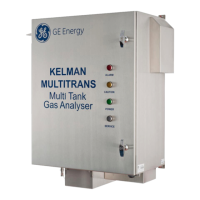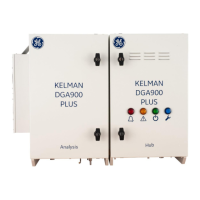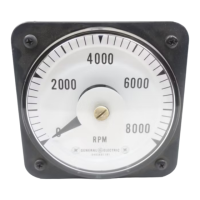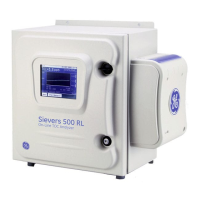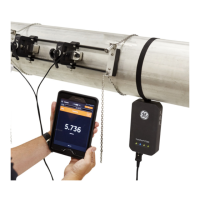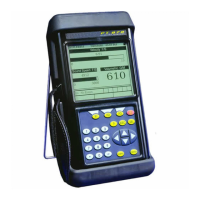5-70 Issue 01, 04/2005 Krautkramer USM 35X
Operation
BOLDLI (Choice of a registration curve)
One of the four curves marked with a character (L, M,
H, U) can be selected as the registration curve. This
registration curve will then be displayed as a bold line
and an echo amplitude evaluation (dB-to-curve) will be
made for this curve.
– Select the function BOLDLI.
– Use the right-hand rotary knob to select the required
setting.
T-CORR (Sensitivity correction)
This function enables you to compensate for the trans-
fer losses in the material under test. This correction is
necessary if test object and reference block have differ-
ent surface qualities.
You have to find out the adjustment value for the com-
pensation of transfer losses by experiments. The gain
is varied accordingly in this connection, the curve line
remains the same.
– Select the function T-CORR.
– Use the right-hand rotary knob to select the required
setting.
OFFSET (Distance of multiple DAC)
You can activate a multiple DAC and at the same time
determine the distance from the registration curve. The
default setting 6.0 dB generates four other curves at
–12 dB, –6 dB, +6 dB, and +12 dB from the registration
curve, and additionally two other curves at +18 dB and
+24 dB. The setting 0 generates only the registration
curve and the two fixed curves. Any setting different
from 0 generates four other curves at a set distance
from the original curve. For a better distinction in multi-
ple DACs the registration curve is displayed as a bold
line.
Adjustment range: 0 dB ... 14 dB in steps of 0.5 dB
– Select the function OFFSET.
– Use the right-hand rotary knob to select the required
setting.
DAC according to JIS Z3060-2002 (only USM 35X DAC and USM 35S)
5-70 Issue 01, 04/2005 Krautkramer USM 35X
Operation
BOLDLI (Choice of a registration curve)
One of the four curves marked with a character (L, M,
H, U) can be selected as the registration curve. This
registration curve will then be displayed as a bold line
and an echo amplitude evaluation (dB-to-curve) will be
made for this curve.
– Select the function BOLDLI.
– Use the right-hand rotary knob to select the required
setting.
T-CORR (Sensitivity correction)
This function enables you to compensate for the trans-
fer losses in the material under test. This correction is
necessary if test object and reference block have differ-
ent surface qualities.
You have to find out the adjustment value for the com-
pensation of transfer losses by experiments. The gain
is varied accordingly in this connection, the curve line
remains the same.
– Select the function T-CORR.
– Use the right-hand rotary knob to select the required
setting.
OFFSET (Distance of multiple DAC)
You can activate a multiple DAC and at the same time
determine the distance from the registration curve. The
default setting 6.0 dB generates four other curves at
–12 dB, –6 dB, +6 dB, and +12 dB from the registration
curve, and additionally two other curves at +18 dB and
+24 dB. The setting 0 generates only the registration
curve and the two fixed curves. Any setting different
from 0 generates four other curves at a set distance
from the original curve. For a better distinction in multi-
ple DACs the registration curve is displayed as a bold
line.
Adjustment range: 0 dB ... 14 dB in steps of 0.5 dB
– Select the function OFFSET.
– Use the right-hand rotary knob to select the required
setting.
DAC according to JIS Z3060-2002 (only USM 35X DAC and USM 35S)
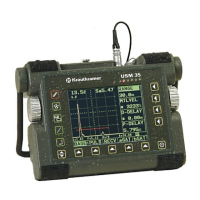
